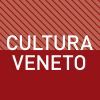WARNING:
On 21st November 2024, for the Feast of Madonna della Salute, the Museum of Torcello will be closed.
 
 
 
 
Segnalazione di anomalie, feedback, richieste informazioni
Invia feedback, segnalazione mancata conformità e anomalie e richiesta informazioni a questo link:
https://segnalazioniweb.cittametropolitana.ve.it/
 
 

WARNING:
On 21st November 2024, for the Feast of Madonna della Salute, the Museum of Torcello will be closed.
 
 
 
The Museum of Torcello will change its time schedule from the 17th October 2024:
 
Monday          closed
Tuesday         from 10:30 to 16:00*
Wednesday    from 10:30 to 16:00*
Thursday        from 10:30 to 16:00*
Friday             from 10:30 to 16:00*
Saturday         from 10:30 to 16:00*
Sunday            from 10:30 to 16:00*
 
*last admission at 15.30
 
Information about the museum and activites:
http://www.museoditorcello.cittametropolitana.ve.it 
https://museotorcello.servizimetropolitani.ve.it/
museo.torcello@cittametropolitana.ve.it
 
Tel. 0412501780
 
No front page content has been created yet.
        
          
h